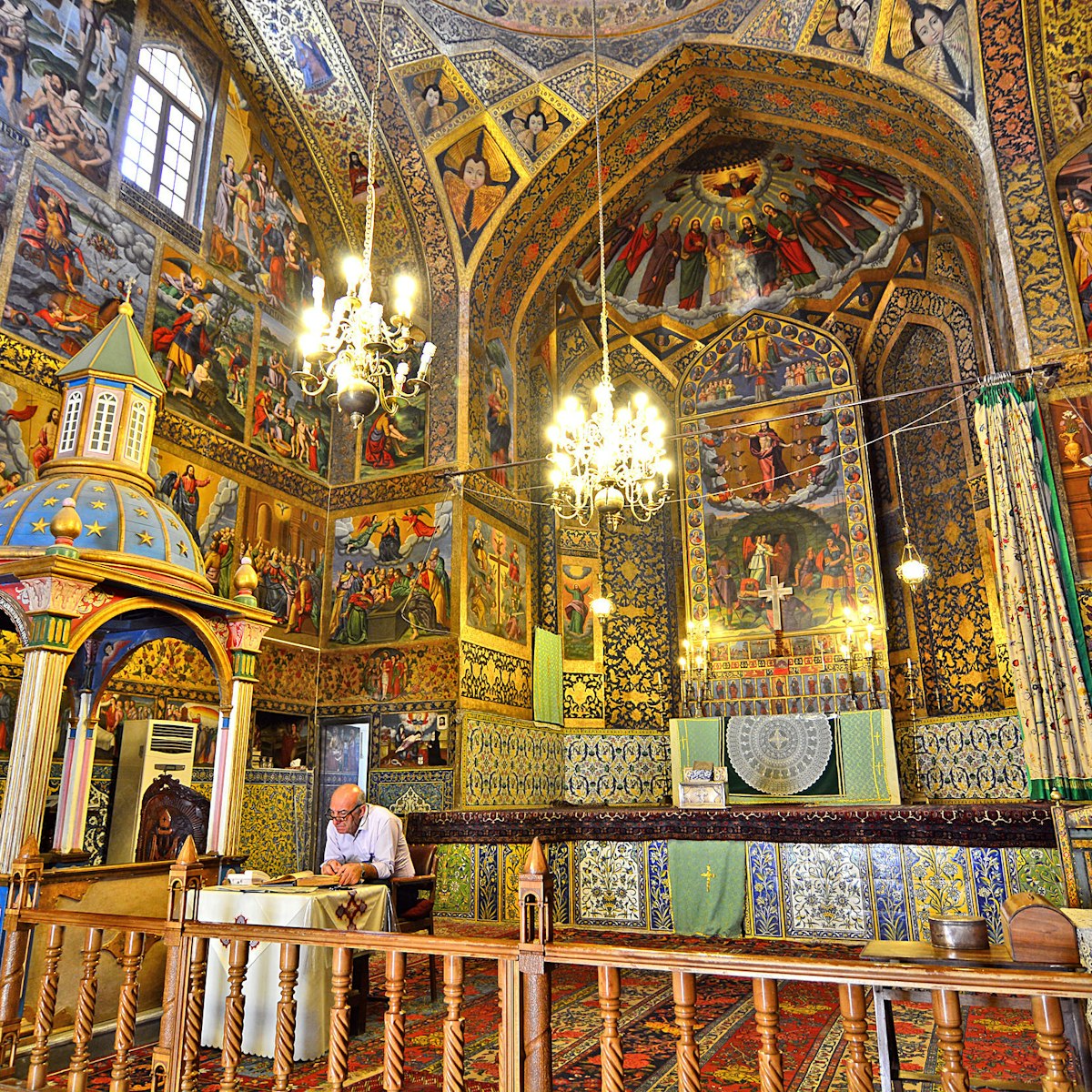Built at the very end of the 16th century as a residence for Shah Abbas I, this six-storey palace also served as a monumental gateway to the royal palaces that lay in the parklands beyond (Ali Qapu means ‘Gate of Ali’). Named after Abbas’ hero, the Imam Ali, it was built to make an impression, and at six storeys and 38m tall, with its impressive elevated terrace featuring 18 slender columns, it dominates one side of Naqsh-e Jahan (Imam) Sq.
The terrace affords a wonderful perspective over the square and one of the best views of the Masjed-e Shah and the mountains beyond. The attractive wooden ceiling with intricate inlay work and exposed beams has been painstakingly restored and now attention is turning towards the walls. Peer behind the scaffolding and watch the artisans at work and it's easy to understand why the project is taking so long.
Many of the valuable paintings and mosaics that once decorated the 52 small rooms, corridors and stairways were destroyed during the Qajar period and after the 1979 revolution. Fortunately, a few fine examples remain in the throne room off the terrace, but the real highlight of the palace is the music room on the upper floor. The stucco ceiling is stencilled with the shapes of vases and rose-water shakers to enhance the acoustics. This distinctive craftsmanship, considered by some to be one of the finest examples of secular Persian art, extends to the walls creating a mosaic of shadows.





